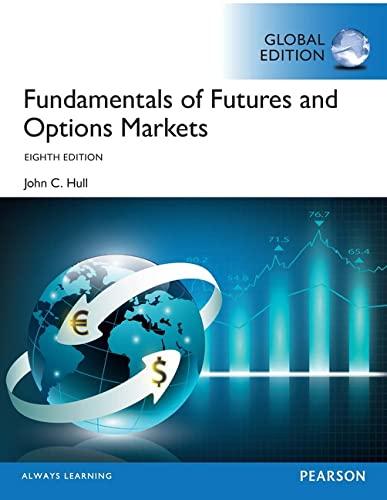Question
I attached a,b,c,d,e, Please do questions: f,g,h A company decided to develop low-cost photo-voltaic solar-energy cells. It decided on two development choices: a fully automatic

I attached a,b,c,d,e, Please do questions: f,g,h
A company decided to develop low-cost photo-voltaic solar-energy cells. It decided on two development choices: a fully automatic line for $800,000 capable of producing 200,000 cells/year for a profit of $1/cell, or a semi-automatic line for $500,000 capable of producing 120,000 cells/year for a profit $1/cell. It is estimated that both lines will last for five years and will have a book value at the end of the five years of 10 percent. Assume both lines will be working to 100 percent capacity. You are the PM for development. Please make all calculations with or without taxes.
Show the ROI calculations for both machines, based on five-year life, 10 percent book value, and 33 percent taxes when applicable.
a. Fully automatic machine = assume 33% taxes, salvage value 10%, and five-year life
b. Fully automatic machine = assume no taxes, no salvage value, and five-year life
c. Semi-automatic machine = assume 33 percent taxes, salvage value 10%, and five-year life
d. Semi-automatic machine = assume no taxes, no salvage value, and five-year life
e. Conclusion: show which plan is better
With taxes and remaining book value: fully or semi-automatic?
Without taxes and remaining book value: fully or semi-automatic?
f. Show fixed and variable profit (including operating costs) breakeven point based on yearly volume for the first five years for both machines. Assuming i = 5%, 10 cents/cell cost to operate the automatic and 40 cents/cell to operate the semi-automatic machine. Selling price for both is $1/unit. Please make a plot of the breakeven sales point.
g. Assuming an interest rate of 5% and life of n = 5 years with no tax consequences or book value remaining, show probability analysis for PV for $500,000 semi-automatic @ 120,000 cells/year machine assuming two probabilities of profit per cell and useful number of years (n) for the machine. P (profit = $0.80) is 0.8 and P (profit = $1) is .20; and P (n = 5) is 0.4 and P (n = 4) is 0.6
h. Assuming an interest rate of 5% and life of n = 5 years with no tax consequences or book value remaining, show sensitivity analysis for PV for semi-automatic machine @ 120,000 cells sold/year @ $1 profit per cell machine, assuming 20% variations in the profit per cell and useful life. Plot the PV results versus the profit and useful life 20% variations.
Number of cells Proft per cell Profit before tax 200000 H4 HS Taa rate 3% 66000 aH6 Profit after tax 134000 H6-H7 Salvage value 80000 ac3 10% Book Value 80000 Terminal Value 134000 aHB+H11. -5.63% -IRR(C12:H12) initial Cost Number of cells 200000 200000 Profit per cell 200000 H18 H19 Salvage Value Book Value 80000 mc17 10 40000 mH21-122 Terminal Value 120000 H20-H23 5.15% mIRR(C24:H24) Initial Cost Number of cells 120000 Profit per cell Proft before tax 120000 120000 120000 H30 H31 Tax rate 3336 38600 aHB2 3396 Profit after tax 80400 aHBO H31. Salvage value 50000 H32 33N Book Value Gain ac29 10% Terminal Value 80400 HRS Number of cells 120000 120000 120000 Proft per cell 120000-H44 H45 120000 Salvage Value Book Value 50000 CAB 10N Terminal Value 120000 1200000 70000 aH46 HAS The plan is better when the fully automati machine isused without taxes and nosalvage value, as it generates an IRR of S.1SN that is higher than the other option Number of cells Proft per cell Profit before tax 200000 H4 HS Taa rate 3% 66000 aH6 Profit after tax 134000 H6-H7 Salvage value 80000 ac3 10% Book Value 80000 Terminal Value 134000 aHB+H11. -5.63% -IRR(C12:H12) initial Cost Number of cells 200000 200000 Profit per cell 200000 H18 H19 Salvage Value Book Value 80000 mc17 10 40000 mH21-122 Terminal Value 120000 H20-H23 5.15% mIRR(C24:H24) Initial Cost Number of cells 120000 Profit per cell Proft before tax 120000 120000 120000 H30 H31 Tax rate 3336 38600 aHB2 3396 Profit after tax 80400 aHBO H31. Salvage value 50000 H32 33N Book Value Gain ac29 10% Terminal Value 80400 HRS Number of cells 120000 120000 120000 Proft per cell 120000-H44 H45 120000 Salvage Value Book Value 50000 CAB 10N Terminal Value 120000 1200000 70000 aH46 HAS The plan is better when the fully automati machine isused without taxes and nosalvage value, as it generates an IRR of S.1SN that is higher than the other optionStep by Step Solution
There are 3 Steps involved in it
Step: 1

Get Instant Access to Expert-Tailored Solutions
See step-by-step solutions with expert insights and AI powered tools for academic success
Step: 2

Step: 3

Ace Your Homework with AI
Get the answers you need in no time with our AI-driven, step-by-step assistance
Get Started


